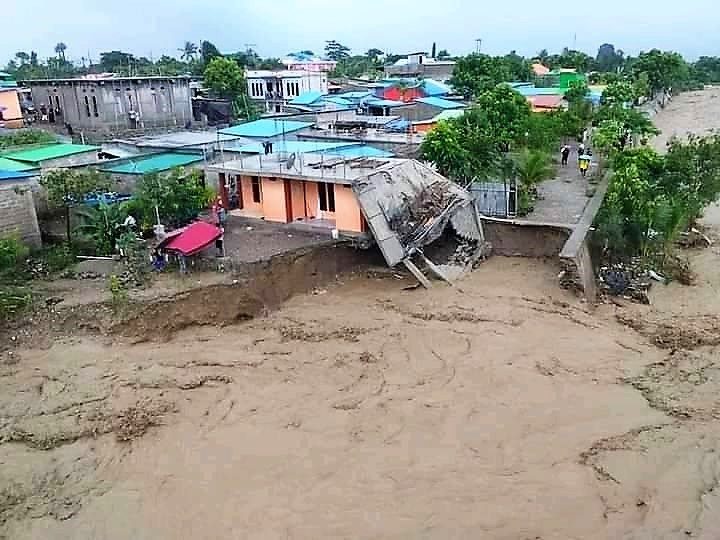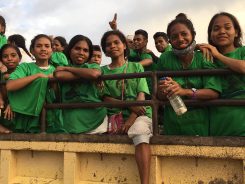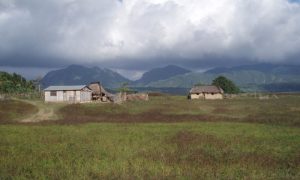On 8th of April, in the aftermath of devastating floods, Timor-Leste’s government declared that Timor-Leste entered the state of emergency for thirty days, when the government appealed to international assistance for its post-disaster rebuilding and recovery. This crisis came just weeks after the government implemented a total lockdown of Dili on 9 March after the country’s first death from COVID-19 was registered. On 21 April, with 749 active cases of COVID-19, Council of Ministers proposed to renew the state of emergency for COVID-19 for another thirty days. The twin crises are now posing a double challenge, dividing Timor-Leste along the line of power inequality: disempowering the poor and the vulnerable, as well as empowering some foreign and national elites through political manipulation and increasing dependency.
The floods have exacerbated the danger of COVID-19 by stressing Timor-Leste’s already fragile health system. In the 2019 Global Health Security Index report, Timor-Leste ranked at 166 out of 195 countries. To date, the 3,300 essential medical personnel (doctors, nurses, midwives) and specialists, is still barely enough to cover the population of 1.3 million. With the lockdown in Dili suspended and clusters of displaced persons increasing, new COVID-19 cases are spiking. Although the first batch of Covid-19 AstraZeneca vaccines, which composed of 24000 doses, arrived in Timor-Leste on 5th of April, limited vaccination may not be able to cover all population and contain the spread of coronavirus in all municipalities.
This flooding also complicates current COVID-19 preventative practices, and exposes disadvantaged populations to increasing health risks. River water is mixed with sewage, trash, mud and debris, and can cause water-born diseases and vector-born diseases, and the post-flood dust provokes respiratory problems, especially for children, pregnant women, and the elderly. In the evacuation centres, it is concerning that displaced persons may not be able to abide by social distancing, and face limited WASH facilities, medicine, and nutritious food. In spite of heightened health risks in the aftermath of floods, available human resources, facilities and equipment are limited. Flood damage to infrastructure linking agricultural areas is likely to add to the already existing socio-economic hardship and food insecurity resulting from the COVID-19 regulations since last year, which could force many poor and vulnerable populations into a more precarious and harmful situation.
Compared to the acute floods and health risks, the political risks are imminent yet less noticeable. The twin crises, which demand rapid and extensive governmental responses, tend to justify extensions of power and financing as well as naturalising and deepening Timor-Leste’s dependency on international support, which worryingly empowers certain foreign and national elites.
It is estimated that the Timorese government needs to allocate 200 million USD at minimum for disaster relief from its current budget scheme. Last year, the government had allocated 60% of a $250 million budget designated for COVID-19 responses. Compounded by Timor-Leste’s adoption of state of emergency guided by a militaristic ideology, as well as its socio-economic impacts since last March, the government may continue to pass extensive financing and security powers in the time of crisis. The F-FDTL General Lere Anan Timur authorized the military and police to use violence against citizens not conformed to the rules in public. The government also asked the national parliament to approve a budget for reconstruction, which increased 2021 national budget up to 2.1 billion, but who and whether the funds will be managed is still uncertain.
Meanwhile, political opportunists could appropriate the moment of crisis to attack political enemies or advance their personal interests. The disaster may temporarily subdue the struggle within power dynamics among the political elites, yet it could end up intensifying them. On social media, some hard-core supporters of national leader Kay Rala Xanana Gusmao and Congresso Nacional dae Reconstrucao de Timorense (CNRT) party interpreted the fact that some victims turned the Prime Minister Taur Matan Ruak away during his visit to devastated communities, yet welcomed Gusmao, as an indication of Gusmao and the CNRT party’s competency for government. Gusmao often violated the sanitary rules to maintain social distancing after the lockdown was declared. In a public confrontation, Gusmao questioned the test result of a COVID-19 patient Armindo Borges and criticized the government’s current COVID-19 measures banning his family from burying his body.
Gusmao’s influence and intervention could escalate distrust and resentment among communities who are impatient with the government’s prolonged state of emergency and conflict between political elites who disagree with each other on COVID-19 responses and the national budget. Equally problematically, Gusmao’s behavior of slapping female mourners, and the apparent impunity that he was evidently granted by attending police, demonstrates the ongoing dominance of militaristic and patriarchal attitudes in a the nation where intimate partner violence and gender-based violence against women and girls are prevalent and possibly rising during the pandemic.
COVID-19 and the floods have not just stimulated solidarity among the diaspora, local communities and NGOs on the ground, but also prompted enormous support from development partners. For example, the Chinese and American governments each promised to support the Timorese government with 100000USD for disaster relief, along with the emergency assistance from the Australian embassy and various UN agencies. However, the double crises in Timor-Leste could aggravate existing power asymmetry and inequality in the development sector, which are easily masked in the dominant humanitarian aid discourses. Such discourses presume a neo-colonial and neoliberal ideology that less developed countries need to be ‘saved’ by good-willed, more knowledgeable and capable partners, which can be dated back to the beginning of Timor-Leste’s state-building enabled by the UN. Swarms of international aid and humanitarian assistance do not change long term problems, but deepen Timor-Leste’s vulnerability to shocks like coronavirus and climate-related extreme weather events.
Women and power in Timor’s elections
Quotas guarantee high levels of female representation in parliament. But patronage, and thus political power, remains decidedly in male hands.
Timor-Leste’s twin crises affect the nation’s poor and vulnerable most, and the government will need a lot of support from within, as well as from international agencies and more developed countries. Nevertheless, we should not forget that crisis tend to turn discussions and debates of post-crisis relief and recovery into technical issues within existing governing and power structures, such as how to improve urban development and planning, or the government’s institutional capacity. This presumes the government’s existence as an homogenous actor while failing to problematize the political component of the government in the development process intertwined with power. Critics argued that the Timorese government, which upheld an oil-reliant economic development strategy, has marginalised climate adaptation measures in its urban development and economic recovery plan, and limited itself to centralized power and oil dependency. Lack of strong political leadership and cooperation among male elites has further impeded the government’s ability to increase and mobilise resources for crisis prevention, let alone making structural changes which could empower those least fortunate in non-oil sectors. The power dynamics and power inequity that determines the country’s agenda-setting and policy-making is ignored, continuously exposing Timor-Leste to political maneuvering and deepening foreign dependency. Timor-Leste may need to work with different stakeholders closely to recover from the twin crises, but it does not mean that it can afford to put aside critical discussions and reflections on the power embodied in the crisis discourse. Ignoring that imbalance of power will lead to social and political instability and a vicious cycle of poverty, vulnerability, dependency and exploitation beyond the current crises.
 Facebook
Facebook  Twitter
Twitter  Soundcloud
Soundcloud  Youtube
Youtube  Rss
Rss 



